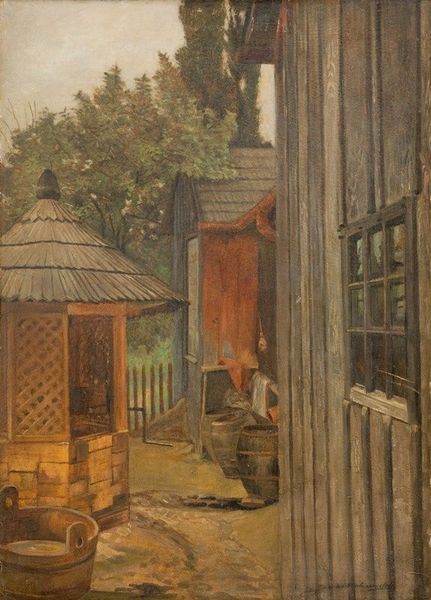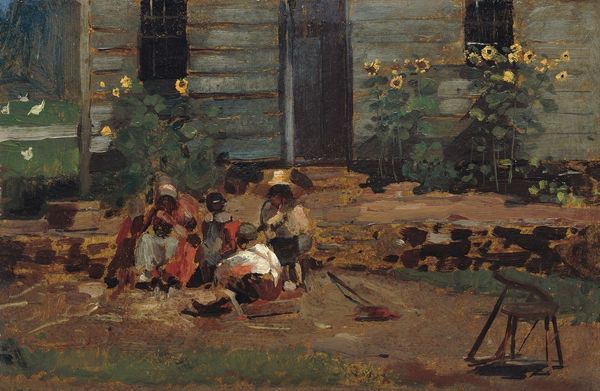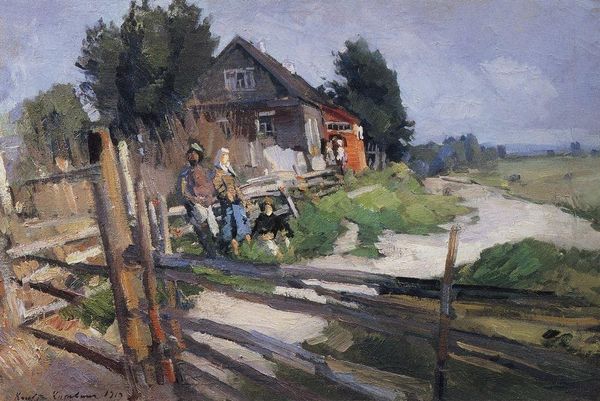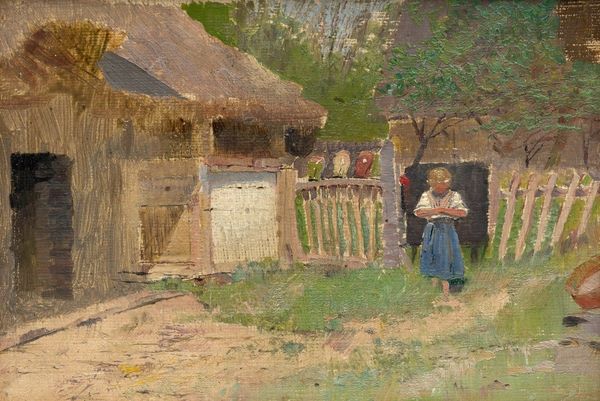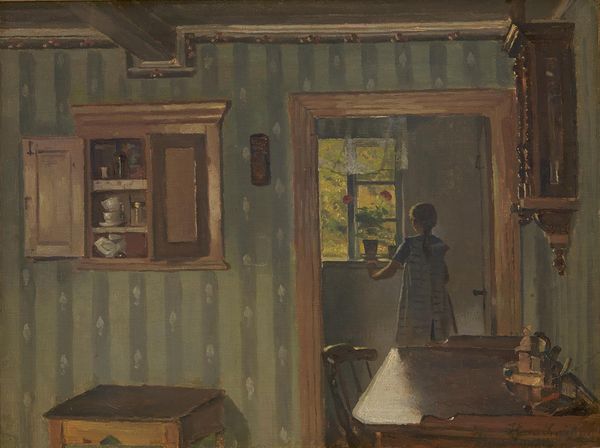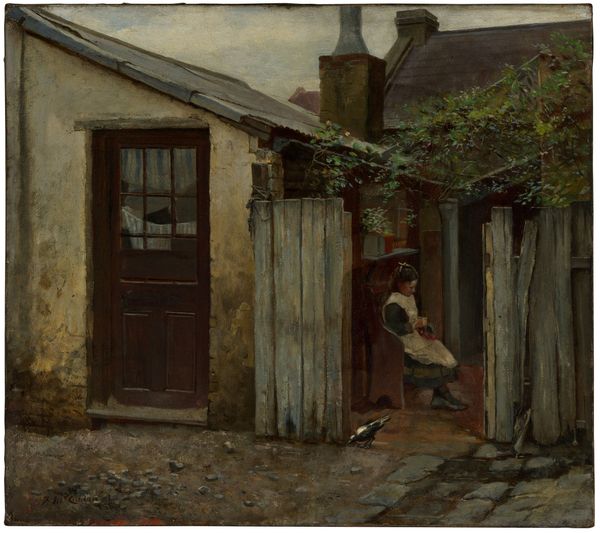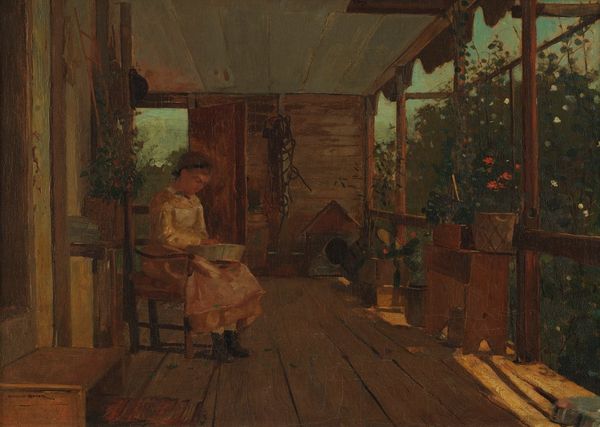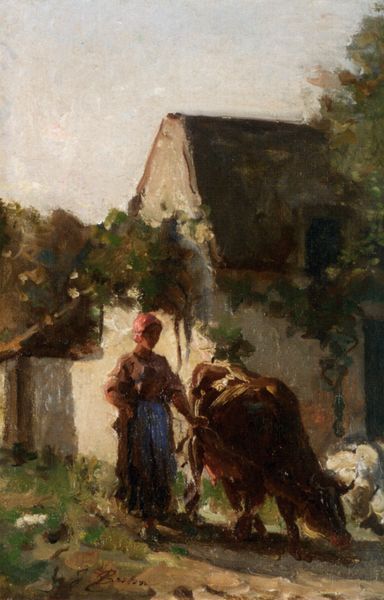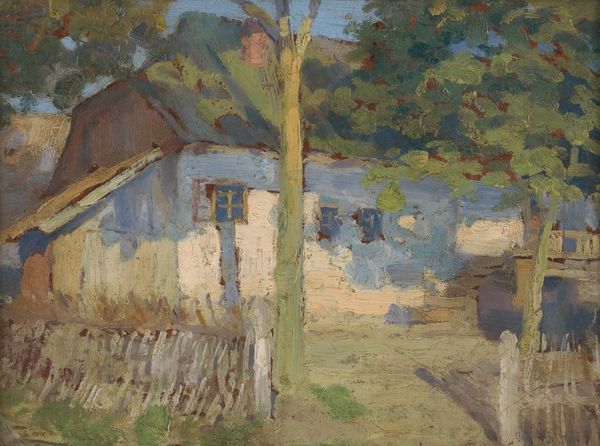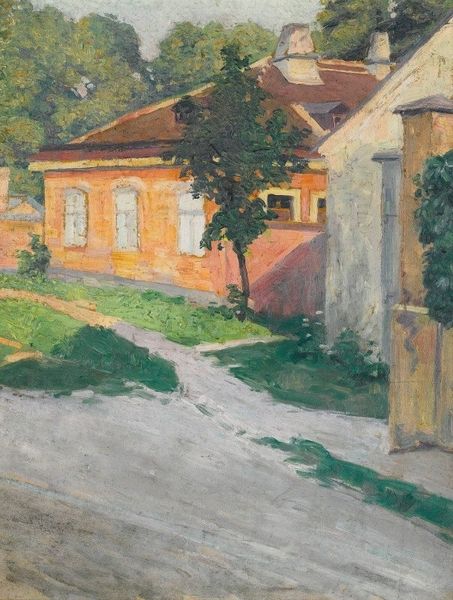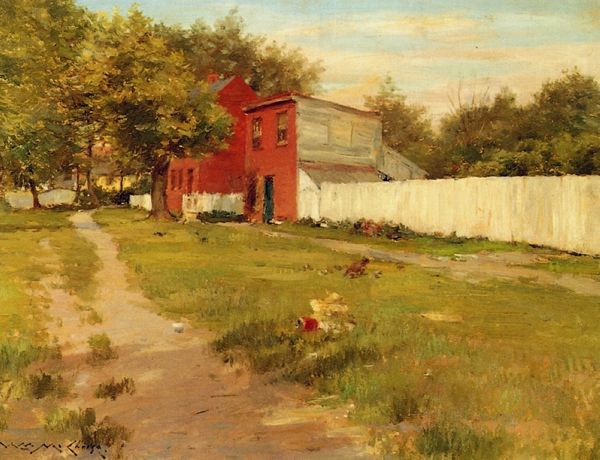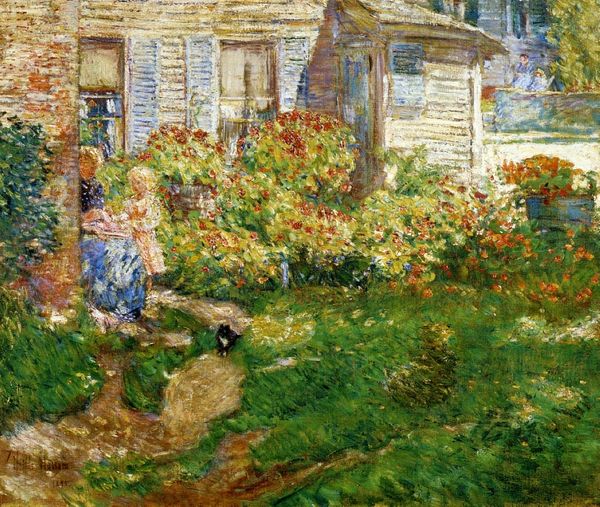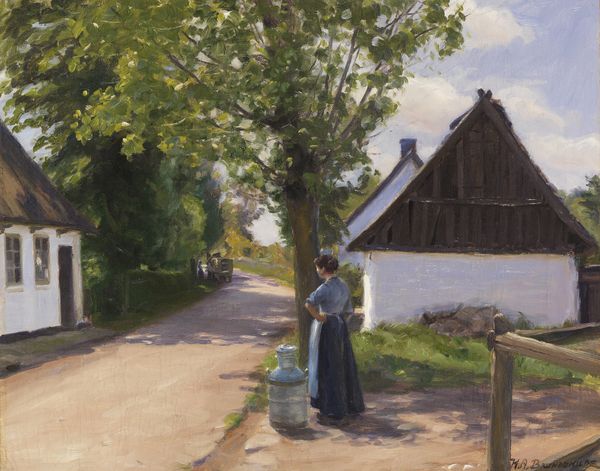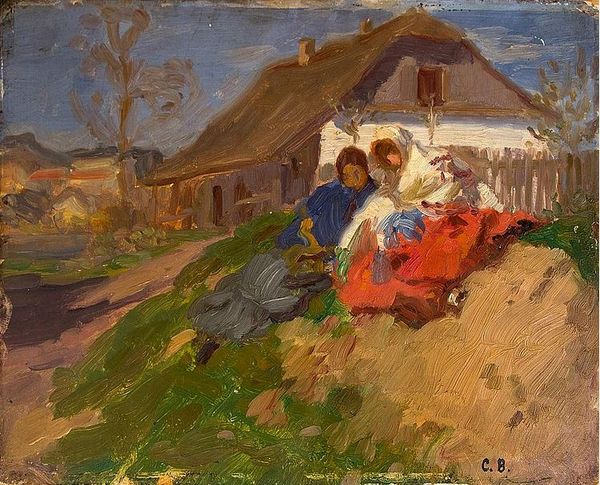
painting, oil-paint
#
portrait
#
painting
#
oil-paint
#
landscape
#
oil painting
#
russian-avant-garde
#
genre-painting
#
realism
Copyright: Public domain
Curator: Andrei Ryabushkin's "In the Village. Girl with a Bucket," painted in 1898, offers us a glimpse into rural life. What strikes you about it initially? Editor: The strong verticality immediately catches my eye. The canvas emphasizes the upward reach of the buildings and even that spindly tree, contrasting sharply with the young girl’s horizontal stance as she carries the buckets. It creates a slightly off-kilter, almost oppressive feel. Curator: Oppressive? I see it more as a snapshot of everyday resilience. The buckets, traditionally yoked, now carried with outstretched arms, evoke a vulnerability, yet also the enduring strength of women in bearing their burdens. Editor: I concede the resilience. But the palette contributes to my initial feeling. The somber browns and dark greens against the pale sky create a rather muted atmosphere. The light isn’t celebratory; it's more observational. Curator: And it is within that observation, within the ordinary, that the symbolism thrives. Note the rooster near the well—a potent symbol of masculine virility and the cycle of life itself— juxtaposed with the girl on her daily chore. This layering speaks to generational roles. Editor: From a formal perspective, the positioning of the girl is curious. She isn't centrally placed but rather off to the side, almost as though the artist wants us to consider her *within* the context of her surroundings, but not necessarily as the sole focal point. The textures—the roughly hewn logs, the smoothness of the buckets— also create subtle visual interest. Curator: Absolutely. And the placement directs us to consider how this woman has become synonymous with this landscape and vice versa. There is, for example, a clear parallel to Russian folklore about peasant women tied to the land. It underscores the weight of tradition, the psychological gravity, in these pastoral scenes. Editor: Yes, Ryabushkin successfully uses color and placement to pull our eye deeper into those cultural narratives. It moves the work beyond mere representationalism. Curator: Ultimately, this painting is far from a simple genre scene. It is a story etched in oil paints on a canvas of human and historical struggles, with Ryabushkin expertly choosing to give weight to certain motifs to draw a richer meaning from the work. Editor: Agreed. Seeing it through the lens of folklore adds dimensions to the work's formal structure and my own understanding.
Comments
No comments
Be the first to comment and join the conversation on the ultimate creative platform.
